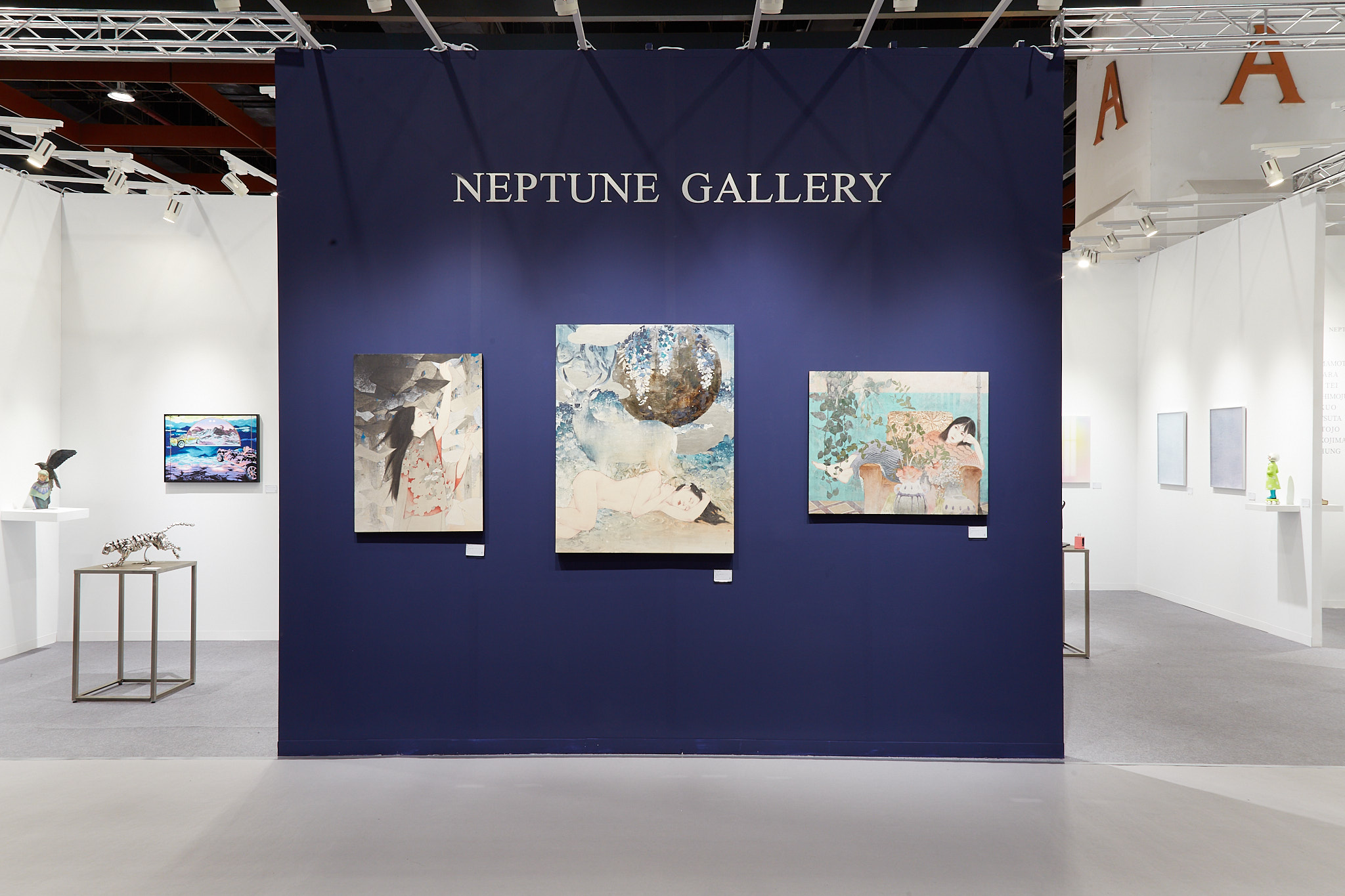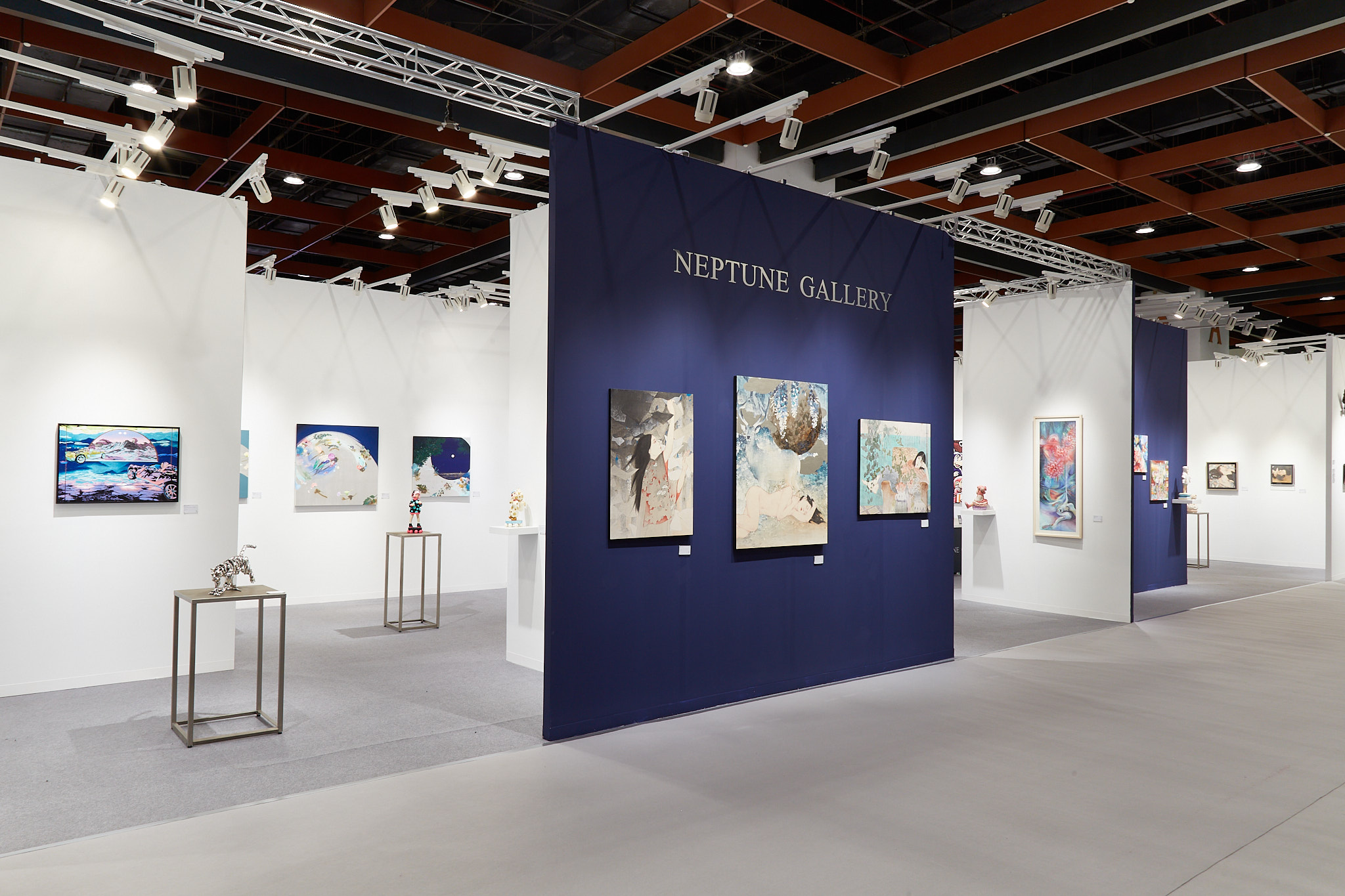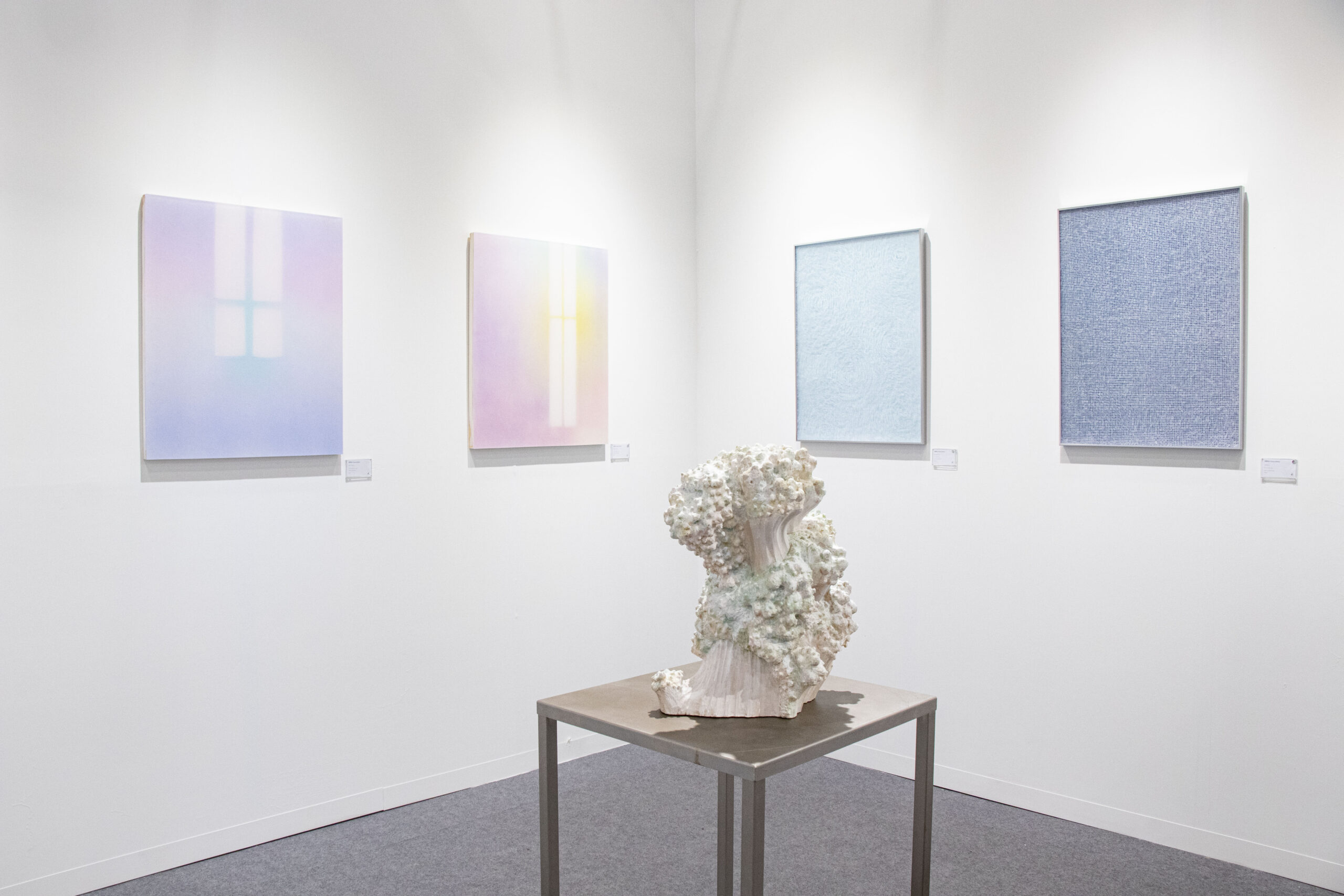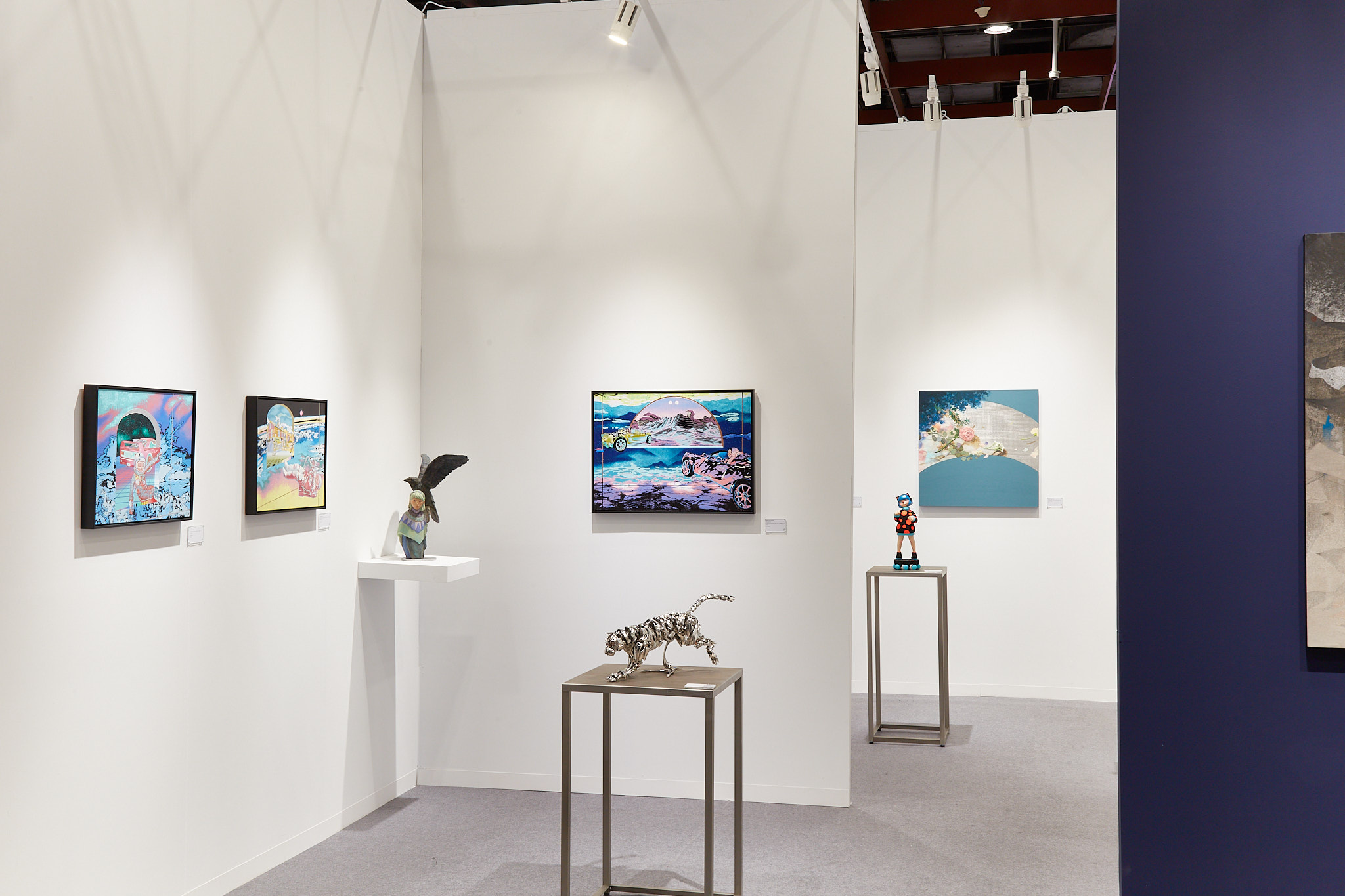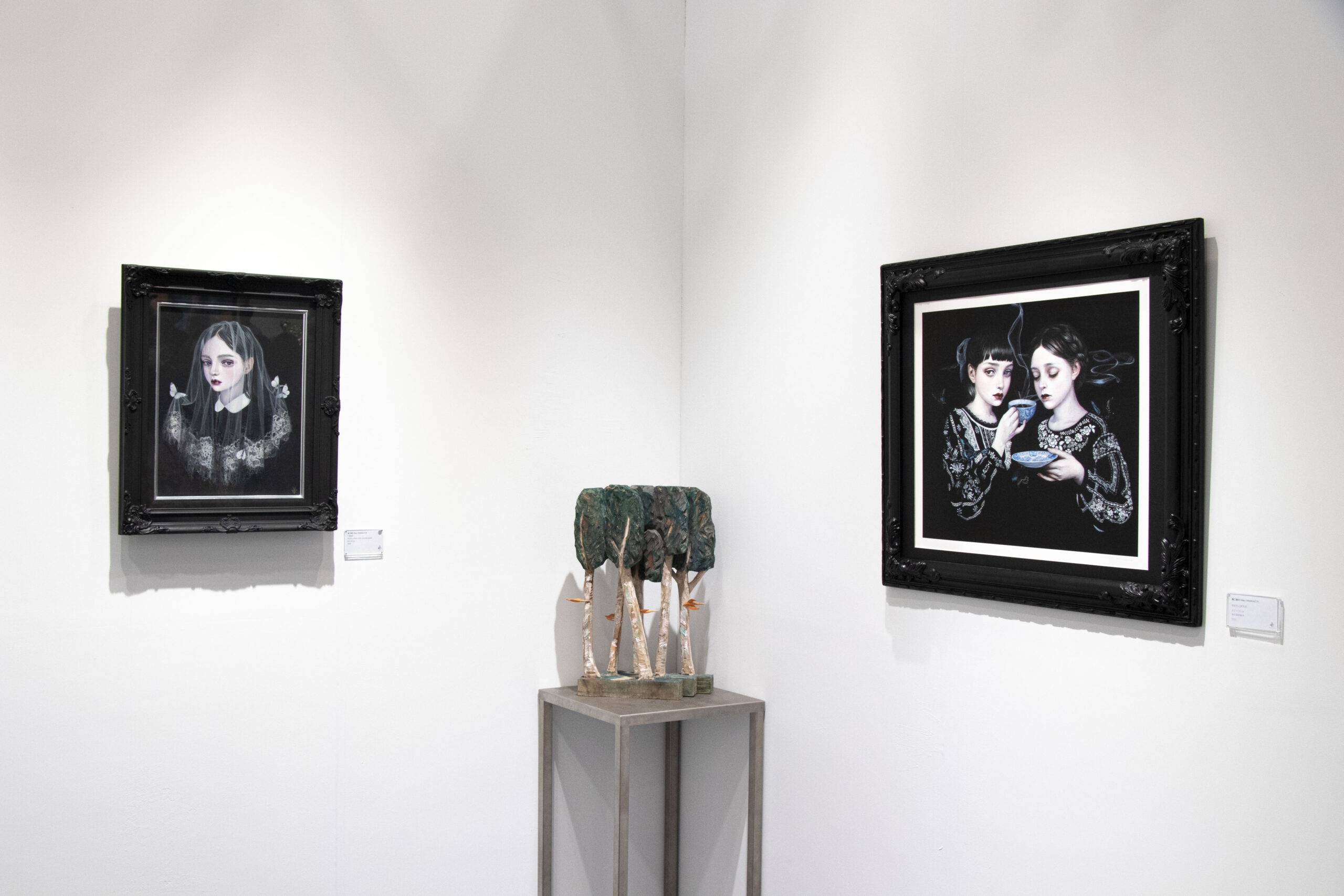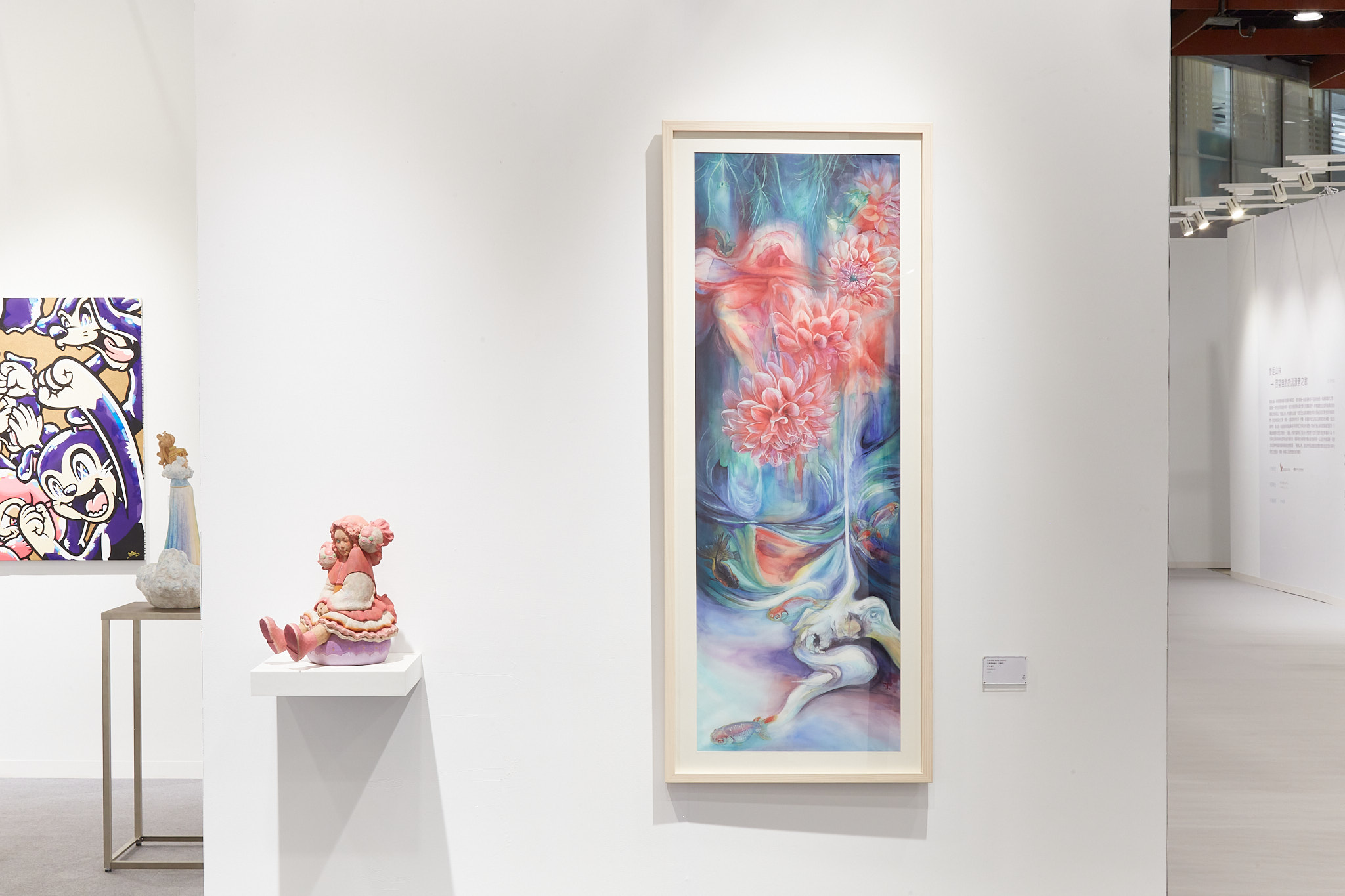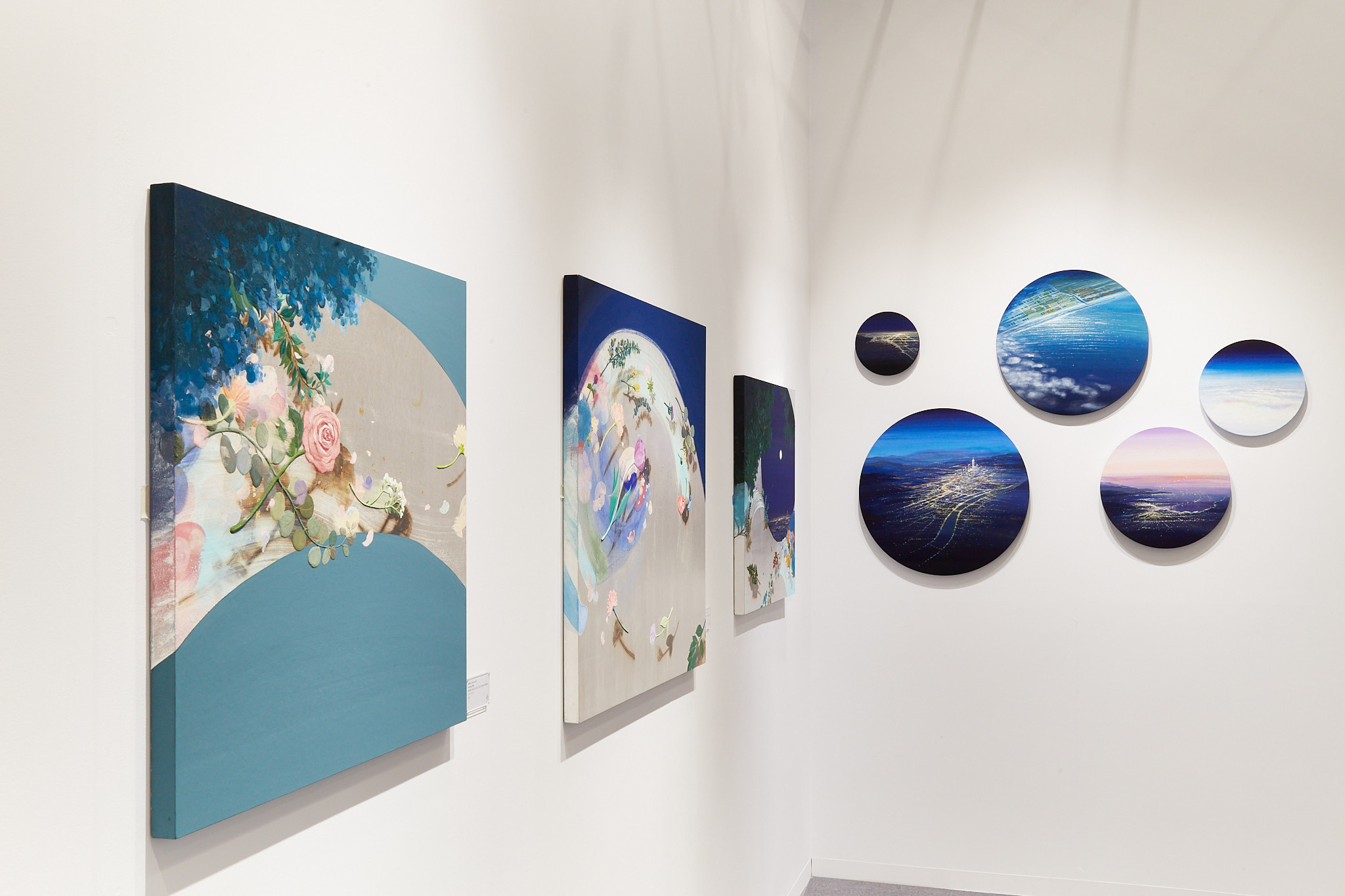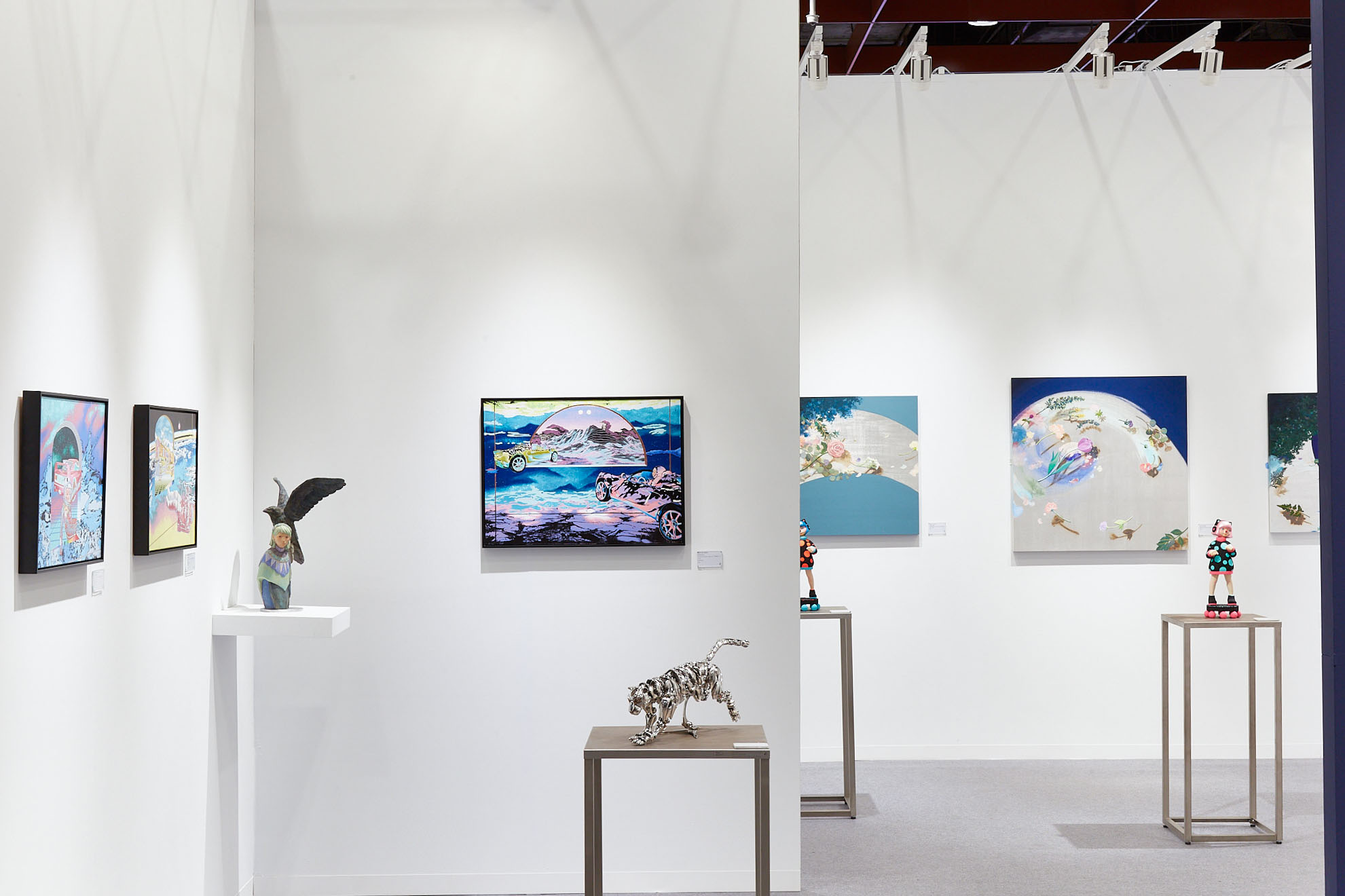涅普頓畫廊很榮幸再次參展Art Taipei 2023,此次展會以「Infinite Borders 無垠之境」為題,以探究當代藝術的無限可能為基礎,論述並形塑出精選18位參展藝術家的詩意維度。策展概念發想自俄國導演安德烈.塔可夫斯基(1932.4.4-1986.12.29)一生中唯一且最重要的一本著作『雕刻時光』,如同電影中構築詩意的觀看關係,藝術家在無限蔓延的時光中刻鑿了獨有的痕跡,不論何種形式,皆象徵著對世上的存有進行無限的思辯與生命探索。博覽會展期為10月20日(星期五)至10月23日(星期一),貴賓預展舉行於10月19日(星期四)下午三點,我們誠摯邀請您的蒞臨。
此次的展出藝術家及所創作的藝術形式,呼應策展概念,將概述為『侘寂』、『雕刻』與『思辯』三個面向簡要地介紹。『侘寂』可視為日本美學的中顯著的審美特點,在極簡中發現精神性的嚮往,不以追求完美為目的,更在自然中找尋到內心的簡單平靜。呼應吳逸萱、陳睿淵、顧洛水、山本真澄、下重ななみ五位藝術家的藝術,吳逸萱展出新作《好消息》,點綴局部的自然花葉,在礦彩金箔間游移,創造浮動效果的姿態映出優雅的空間感。陳睿淵擅以抽象勾勒建物與自然景致,用攝影紀實的視覺特性,擬仿日本畫媒材的變異,更在觀看中匯流聚合出若現的寂寥之美。顧洛水如夢的古典美人姿態,沉著寂冷如同深掘畫面中的內心故事,和下重ななみ的現代美人迥然不同,迷濛羞澀卻充滿萬千情懷,倒也突顯了相異國度文化底蘊的觀點及內涵。多以孩童為主題的山本真澄,將澄澈清透的靈魂結合不同信仰的文本,透過藝術繪出成人內心的寂寥與羈絆。
『雕刻』的層次延續時間停留於藝術創作最美好的當下,以官野良太、東條明子、勝田えみ、灰原愛、小島久典、海谷慶、丸山達也、郭奕庭共八位藝術家各具風格的三維視野,重塑藝術對思想、精神與靈魂的結構。官野良太以樹脂刻畫再現海潮波光粼粼,形塑雕刻與繪畫之間的關係;東條明子雕琢童真無邪的寓意,以符號學為基礎,堆疊記憶的厚度;灰原愛將當代都會的空洞一瞬透過藝術敲擊你我的共鳴;勝田えみ將時空倒敘,以時尚命題與姿態重新演繹傳統木雕工法;小島久典凝結了蝴蝶展翅的屏息瞬間,如時間沙漏般回溯,揭開歷史的面紗;海谷慶將生活故事結合日常過客,以生命經驗淬鍊出獨特意義;丸山達也再述了雕刻中的故事文本,以古典技法再現當代思維。
最後,『思辯』的命題,由巴梅莉、洪瑞良、程亮介、谷保玲奈、濱口真央的藝術詮釋演繹。在形式不斷改變與演進的當下,巴梅莉將畫布上的色彩解離後再造未來感的視野,拋出人工智慧(Ai)便利卻可能帶來兇猛反撲的反思;洪瑞良以設計和材質的基礎重塑藝術的可能性與無限性,實現結構主義的精神面貌;程亮介將二維畫面的世界觀賦予遊戲性,催化想像的動能;谷保玲奈跨越了媒材與學養的框架,以獨特的創作手法碰撞後,再塑且更超越傳統媒材的無限可能;濱口真央以一貫的物件投射,在蝴蝶、煙霧、蕾絲與極美的人形裡,雕琢了藝術於生命的本質和意涵。
Neptune Gallery is honored to participate in Art Taipei 2023. This exhibition, titled “Infinite Borders,” is built upon the exploration of the infinite possibilities of contemporary art, discussing and shaping the poetic dimensions of 18 selected exhibiting artists. The curatorial concept is inspired by the most significant work of Russian director Andrei Tarkovsky (1932.4.4 – 1986.12.29), “Sculpting in Time.” Similar to the construction of poetic viewing relationships in film, artists, in the infinite expanses of time, carve out unique traces, symbolizing infinite contemplation of existence and exploration of life. The exhibition runs from October 20th (Friday) to October 23rd (Monday), with the VIP preview on October 19th (Thursday) at 3:00 PM. We sincerely invite your presence.
The exhibiting artists and their art forms in this exhibition, echoing the curatorial concept, will be briefly introduced under the themes of ‘Wabi-Sabi,’ ‘Sculpting,’ and ‘Contemplation.’ ‘Wabi-Sabi’ represents a significant aesthetic characteristic of Japanese aesthetics, discovering spiritual longing in simplicity, not pursuing perfection but finding inner simplicity and tranquility in nature. Artists such as Yi Shuan WU, Jui Wen TAN, Rakusui KO, Masumi YAMAMOTO, and Nanami SHIMOJU resonate with this theme. Yi Shuan WU presents a new work, “Good News,” embellishing natural leaves with floating effects among mineral-colored gold leaf, creating an elegant spatial sense. Jui Wen TAN, skilled in abstractly delineating buildings and natural landscapes, uses the visual characteristics of documentary photography to imitate the variations of Japanese painting media, converging and aggregating a present loneliness in viewing. Rakusui KO, with dreamlike classical beauty, calmly and coldly depicts inner stories deep within the picture, contrasting sharply with the modern beauty of Nanami SHIMOJU, which is shy and full of emotions, highlighting different perspectives and connotations of cultural heritage from different countries. Masumi YAMAMOTO, who mainly focuses on children, combines clear and transparent souls with different faiths, using art to depict the loneliness and bonds of adults.
‘Sculpting’ continues the layers of time, staying in the most beautiful moments of artistic creation. Eight artists, including Ryota KANNO, Akiko TOJO, Emi KASUTA, Ai HAIBARA, Hisanori KOJIMA, Kei KAIYA, Tatsuya MARUYAMA, and Iting KUO, each with their unique three-dimensional perspectives, reshape the structure of art’s connection to thought, spirit, and soul. Ryota KANNO uses epoxy to portray the sparkling sea tide, shaping the relationship between sculpture and painting. Akiko TOJO carves the innocence and pureness of childhood, based on semiotics, stacking the thickness of memory. Ai HAIBARA strikes a chord with the emptiness of contemporary urban life through art, creating resonance between people. Emi Katsuta narrates time backward, reinterpreting traditional woodcarving techniques with fashionable propositions and postures. Hisanori KOJIMA captures the breathless moment of a butterfly spreading its wings, retracing like an hourglass, unveiling history. Kei KAIYA combines life stories with daily passersby, tempering unique meaning through life experiences. Tatsuya MARUYAMA recounts stories in sculpture, using classical techniques to reproduce contemporary perspective.
Finally, the theme of ‘Contemplation,’ interpreted by artists Maria BARBAN, Jui Liang HUNG, Ryosuke TEI, Reina TANIHO, and Mao HAMAGUCHI. In the ever-changing and evolving present, Maria BARBAN disassembles the colors on the canvas, reconstructing a futuristic vision, and raising reflections on the convenience of artificial intelligence (AI) that may bring fierce backlash. Jui Liang HUNG reshapes the possibilities and infiniteness of art based on design and materials, realizing the spirit of structuralism. Ryosuke TEI endows the world view of two-dimensional images with playfulness, catalyzing the kinetic energy of imagination. Reina TANIHO transcends the boundaries of media and education, colliding with unique creative methods, shaping and surpassing the infinite possibilities of traditional media. Mao HAMAGUCHI, with consistent object projections, carves the essence and meaning of art in life through butterflies, smoke, lace, and beautiful female forms.

